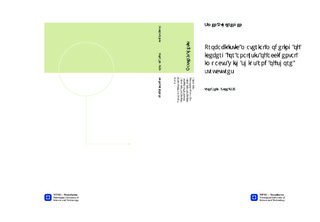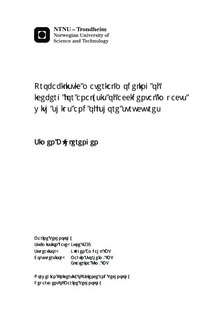| dc.contributor.advisor | Amdahl, Jørgen | nb_NO |
| dc.contributor.advisor | Storheim, Martin | nb_NO |
| dc.contributor.advisor | Kim, Ekaterina | nb_NO |
| dc.contributor.author | Bøhlerengen, Simen | nb_NO |
| dc.date.accessioned | 2014-12-19T12:10:34Z | |
| dc.date.available | 2014-12-19T12:10:34Z | |
| dc.date.created | 2013-09-19 | nb_NO |
| dc.date.issued | 2013 | nb_NO |
| dc.identifier | 649831 | nb_NO |
| dc.identifier | ntnudaim:9548 | nb_NO |
| dc.identifier.uri | http://hdl.handle.net/11250/238708 | |
| dc.description.abstract | There has been an increasing interest of maritime and offshore operations in the arctic regions for some decades now. In arctic regions there are icebergs which can?t be neglected. The first part of this thesis is an introduction of the sea ice material and the material model developed by Zhenhui Liu. It will also be introduced some pressure relations, particularly the process pressure-area curve and the spatial pressure-area curve.Development of numerical models which can be used in design process instead of full-scale measurements or model experiments would be very cost-efficient, and is therefore a hot topic these days. Modeling of an iceberg is associated with substantial challenges, due to the complexity of the material sea ice. Zhenhui Liu has developed a material model that gives reasonable load and pressure levels. This model has been evaluated and a parametric study has been performed. Zhenhui Liu?s material model is homogenous. Earlier research has found that general icebergs are inhomogeneous with a mixture of hard and weak zones. Therefore Zhenhui Liu?s material model has been further improved during this master thesis by developing a method that produces a stochastic variation of the some specific material parameters. This should improve the model, and give the iceberg inhomogeneous material properties.This new modified model has been analyzed for both Ultimate Limit State (ULS) and Accidental Limit State (ALS). ULS only allows that the structure can undergo small deformations with no to limited elasto-plastic behavior. For ULS design maximum forces and pressures from the ice as structure crushes the ice are highly relevant. Therefore MATLAB scripts have been developed where forces and pressure-area curves can be plotted. ALS design accepts that the structure can undergo substantial deformations. For such impact scenarios, pressure-area curves are meaningless; and the more important results are the relative strength between the colliding objects. The level of structural damage in form of deformation and dissipation of energy are highly relevant for such impacts, which has led to development of more MATLAB scripts that produces relevant curves for ALS design.The stochastic variation of the material parameters was a success. The new inhomogeneous iceberg model gave reasonable results, where especially local pressures and the location of occurrence of high pressure zones have been improved. From the ALS design analysis, the new inhomogeneous iceberg model gives considerable structural damage to the panel used. The new inhomogeneous iceberg model is stronger than the homogenous iceberg model, especially in the beginning phase of an impact scenario. | nb_NO |
| dc.language | eng | nb_NO |
| dc.publisher | Institutt for marin teknikk | nb_NO |
| dc.title | Probabilistic material modeling of iceberg for analysis of accidental impacts with ships and offshore structures | nb_NO |
| dc.type | Master thesis | nb_NO |
| dc.source.pagenumber | 151 | nb_NO |
| dc.contributor.department | Norges teknisk-naturvitenskapelige universitet, Fakultet for ingeniørvitenskap og teknologi, Institutt for marin teknikk | nb_NO |

